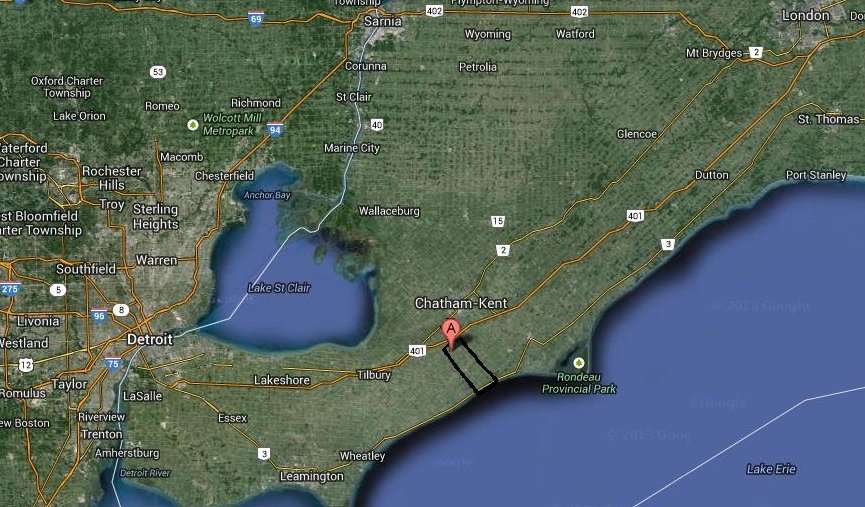|
 The Elgin Settlement Posted by:  Bon Echo Bon Echo
N 42° 18.379 W 082° 13.260
17T E 399365 N 4684508
At its peak, the Elgin Settlement became home to 1,200 fugitives who had escaped slavery in the United States and found freedom in Canada
Waymark Code: WMJDMX
Location: Ontario, Canada
Date Posted: 11/04/2013
Views: 8
"There are signs of industry and thrift and comfort, everywhere; signs of intemperance, of idleness, of want, nowhere. There is no tavern and no groggery; but there is a chapel and a schoolhouse. Most interesting of all are the inhabitants. Twenty years ago, most of them were slaves who owned nothing, not even their children. Now they own themselves; they own homes and farms, and they have their wives and children about them. They are enfranchised citizens of a government which protects their rights. They have the great essentials of human happiness, "something to love, something to do, and something to hope for" and if they are not happy it is their own fault."
Written about the Elgin Settlement by Dr. Samuel Gridley Howe (1801-1876) who was appointed by Edwin Stanton of Abraham Lincoln's administration to report on the Freedmen's Inquiry Report. His report became part of the Congressional debate on the Fourteenth Amendment.
|
(the above text was taken from the Buxton National Historic Site and Museum website, emphasis added)
The coordinates for this Waymark will bring you to the Buxton National Historic Site and Museum, situated within the historical boundaries of the Elgin Settlement. The Elgin Settlement (also known as the Buxton Settlement) began in 1849 and "ceased" settlement status in 1872, when the Elgin Association (which was the corporation that secured the lands for the settlement) officially ended. The Buxton Settlement became North Buxton and South Buxton. Descendants of the original settlers remain in the area to this day.
A plaque located at the site describes the Buxton Settlement in this way:
From the shores of Lake Erie to the seventh concession, from Dillion Road on the east to Drake Road on the west, Buxton's ordered fields are dotted with churches and homes from the epic experience of the Underground Railroad. In 1849, Reverend William King arrived with fifteen former slaves at a 9,000-acre tract of swampy, forested land. More refugees followed, buying and clearing 50-acre homesteads, establishing industries, churches and schools. The settlers created the rectangular pattern of roads and drainage ditches seen today, transforming the landscape into the prosperous Elgin Settlement, as it was then called, where neat cottages spoke of industry and thrift, and children received a classical education. Buxton lives on today through descendants of these determined immigrants who carved out a free life for themselves and their families on the tranquil plains of southwestern Ontario.
|
The following image demonstrates the relative size of the settlement, as well as the approximate location of the settlement - particularly, note the location relative to the Canada-US border along the Detroit River

The site now stands as a testament to the freedoms and opportunities afforded to fugitive slaves in a new country. Indeed, a letter written in 1850 on behalf of "the coloured inhabitants of Pittsburg" to the residents of the Elgin Settlement stated "You are now in a land of liberty, where the rights and privileges of freeman are secured to you by law" (the full text of the letter, and one written in response, can be read in this Waymark listing
WMJDN1_The_Liberty_Bell_1850
However, it is worth noting that the founding of this settlement did not go without protest. According to the information presented on the Library and Archives Canada website http://www.collectionscanada.gc.ca/northern-star/033005-2101-e.html
In the beginning, there was considerable opposition to the settlement plan among the nearby population. Mass meetings of protest were held. Newspapers railed against it. Petitions were signed. "The Negro is a distinct species of the Human Family and, is far inferior to that of the European. Let each link in the great scale of existence have its place. Amalgamation is as disgusting to the eye, as it is immoral in its tendencies and all good men will discountenance it."
Address:
21975 A D Shadd Road
North Buxton, Ontario Canada
N0P1Y0

Web site: [Web Link]

Site Details: see http://www.buxtonmuseum.com/visitors/visitor.html for details

Open to the public?: Public

Name of organization who placed the marker: Buxton Historical Society

|
Visit Instructions:
Provide an original photo of the building and/or marker, and describe your visit.
|